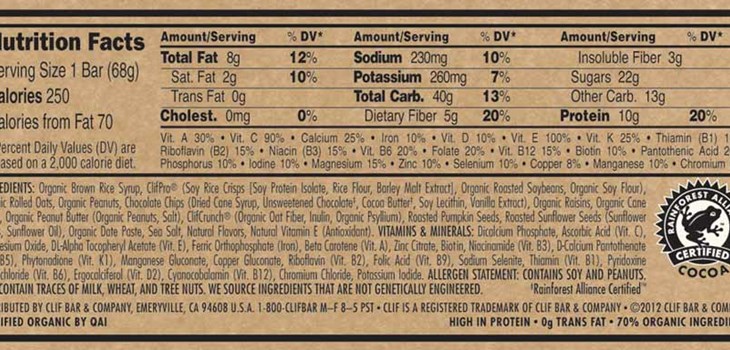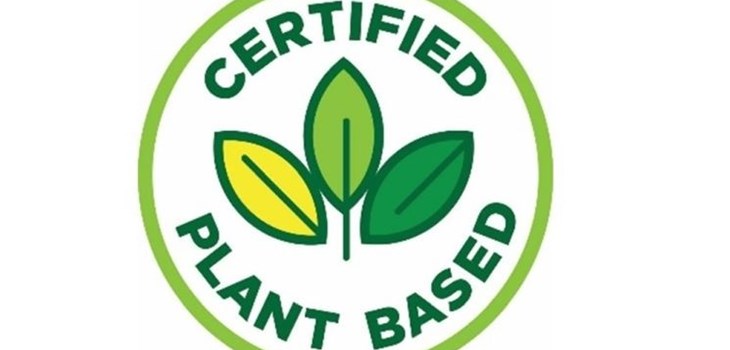How to be a Plant-Based Food Sleuth
11/28/2018
As you’ve hopefully learned by now, incorporating more plant-based food into your diet is pretty simple—though some aspects are easier to nail down than others. While buying in bulk and switching to plant-based milk is straightforward enough, navigating the nuances of food labels and ingredient lists is an acquired skill that you’ll hone along your plant-based journey.
It may not seem necessary at first (hey, that granola is probably just made from oats, right?), but the only way to know you’re eating plants for a change is to put on your detective hat! Once your inner food sleuth emerges, you’ll soon uncover that animal products can sneak their way into a lot of unsuspecting foods.
Thankfully, more and more brands are embracing plant-based eating, and they want consumers to know about it. The market is saturated with labels trying to catch the eye of the conscientious consumer, but they don’t always mean what you’d assume.
Want to train yourself to be a savvy plant-based food sleuth? Grab your trench coat and your trusty sidekick, and investigate these three areas on your next trip to the grocery store:
1. The Ingredient List

It may not be the first place you look when deciding to buy packaged food, but it’s probably the most important. All the information you need when food shopping is here for your quick consideration. Chances are, even though you’re looking at foods largely devoid of meat, eggs, and dairy, they may still contain animal product derivatives that are important to keep in mind. Ingredients like milk fat and egg whites are easy enough to recognize, but here are the tricky ones:
- Whey: A byproduct of cheese-making, whey finds its way into many different nutritional foods that advertise as high in protein. Common examples are protein bars, cereal, and smoothies.
- Casein/Caseinate: Casein is the main protein found in dairy and, like whey, is utilized by sports and nutrition food companies. Common examples are protein shakes and meal replacement bars.
- Lard: Animal fat, or lard, used to be a much more common ingredient in food before vegetable oils swept the market. That said, it can still be found in many prepared pastries or frozen pie crusts.
- Gelatin: Made from boiled animal skin, bones, and cartilage, gelatin is used as a gelling agent in candy, fruit snacks, and other sweets.
- Natural Flavor (Milk): Unfortunately, due to vague FDA regulations, the ingredient “natural flavor” can mean a variety of things. While many food companies will specify whether that natural flavor comes from an animal product, you can’t always be certain.
- Honey: While you might very well know honey comes from bees, you may not be aware of how many food products it touches. Whether you choose to limit your honey consumption is up to you, but you'll often find it in cereal, snack foods, and sauces.
- Confectioner’s Glaze: This one may shock you, but confectioner’s glaze, commonly found in candy, is actually made from shellac, a natural excretion from a lac bug.
2. May Contain Traces of...

If you’ve sleuthed around the ingredient list on your packaged food before, you may have noticed this small claim sitting right below it. Maybe you freaked out because it said “may contain traces of milk” and put it back. Well, we’d urge you not to worry too much about this one. Largely, this information is for those with severe allergies at risk of life-threatening reactions. Usually, it means that the food was produced with the same equipment as another product that has milk or another common allergen as an ingredient. So fear not and eat away! (Unless you have a food allergy, of course.)
3. Labeling

One thing you’ll learn rather quickly as a plant-based food sleuth is that there are a whole host of labels food companies brandish on packaged foods. While these claims can be useful, you always have to be a little cautious.
- Non-dairy: Some coffee creamers advertised as “non-dairy” are simply making a false claim. While these products often don’t contain lactose, the sugar found in dairy is well-known for its human intolerance. Take one second to look in more detail, and you’ll often find some milk derivatives right there in the ingredient list. (This one is just frustrating.)
- Plant-based: Just because a food is labeled as plant-based doesn’t mean it’s entirely devoid of animal products. To some companies, a plant-based label could simply mean the product is mainly made with plants.
- Vegetarian: On the other hand, some foods that are labeled vegetarian may be completely plant-based! Like vegetarian baked beans, for example.
- Vegan: Foods that carry the vegan label have a higher probability of being 100% plant-based since the definition is more strict. However, the only way to know for sure is to become comfortable with the ingredient list.
Thankfully, there are three fantastic organizations out there that certify food as 100% plant-based to give you plant-based peace of mind!
- Vegan Action: With a mission to help plant-based consumers avoid constantly consulting the ingredient list, Vegan Action created their “Certified Vegan” logo for food businesses to better meet the demand for plant-based foods.
- The Vegan Society: Their sunflower logo is both beautiful and functional! Just like Vegan Action, the logo guarantees the product contains no animal product, by-product, or derivative. So, eat away!
- Plant-Based Food Association: As of this year, the “Certified Plant-Based” logo can be found on select few products like Oatly and Tofurky. This brand-new certification indicates a product is made solely with plant ingredients. Keep your eyes peeled as we start to see the logo appear on more and more food in the coming months!
We hope these clues will help you discover the best food to fit your plant-based journey. Pro tip: If you stick to a whole-food diet, you won’t need to worry about any of it! Did we miss something? Let your fellow food sleuths know by using #EatPlantsForAChange on Facebook, Instagram, and Twitter.

